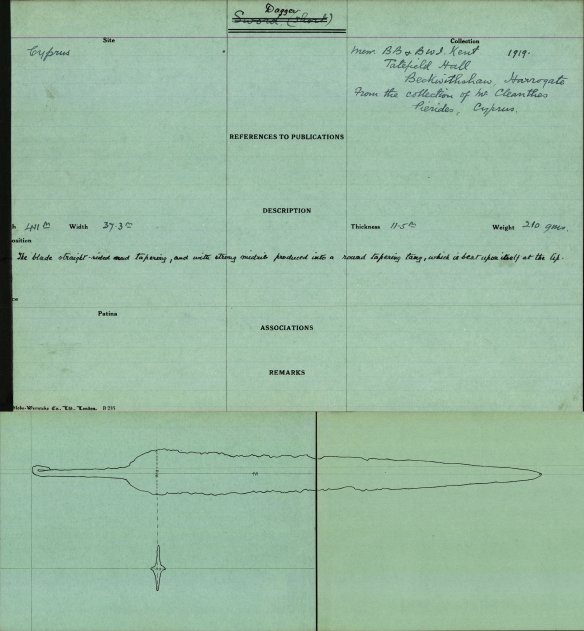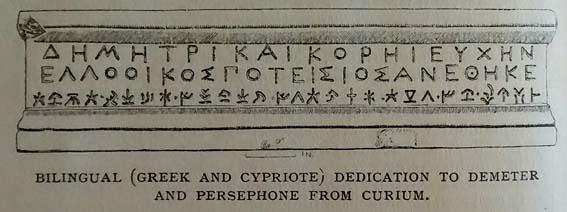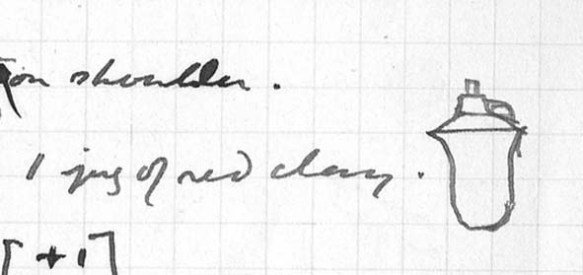While working on the Kent Collection catalogue, I noticed that various entries for bronze implements were accompanied by the cryptic phrase ‘Britt. Ass. Card Cat.’. Since I’m always looking for more information on the provenance of ancient Cypriot collections, I decided to try to track this reference down. This proved refreshingly straightforward, and led me down an interesting route with some familiar faces along the way.

Entry 171 from the Kent Collection catalogue  Harrogate Museums and Arts, Harrogate Borough Council
Harrogate Museums and Arts, Harrogate Borough Council
The ‘Britt. Ass. Card Cat.’ turns out to be the British Association Bronze Implements Card Catalogue, a truly remarkable initiative begun in 1920 under the auspices of the British Association for the Advancement of Science. The aim was to produce a card catalogue of “all the metal objects of the Bronze Age in the museums and collections in the British Isles”, in order to facilitate comparative research. One of the original movers in this enterprise was John Linton Myres, the ‘father of Cypriot archaeology’, excavator of Amathus in Cyprus and cataloguer of the Cesnola Collection at the Metropolitan Museum, New York. The work seems to have progressed on a voluntary basis, with museums, institutions, and private collectors providing basic information – and detailed drawings – of their Bronze Age implements, to be neatly recorded on index cards, filed, and made available for use.
Making information available is of course a different proposition these days, and I was hopeful that this Catalogue might have been digitised in a searchable format. It’s not quite there yet, but is well on the way to being so. In a fascinating project, part of the MicroPasts collaboration between the British Museum and UCL, the transcription of the cards is being crowd-sourced, with anyone with an interest invited to contribute to the task of translating the content of the cards into a digital format. As Neil Wilkin et al. point out in a very informative article on the project, this partnership with interested people from a variety of backgrounds fits well with the original compilation of the Catalogue, which relied on the contribution of time and knowledge from the owners of the objects, whoever they might be.
As far as I can tell, the fully functional, searchable database isn’t quite there yet, although the underpinning data is well on its way. However, vitally for my purposes, a key step of the project is to scan the original cards and make them available for transcription. This led me to Flickr and a wonderful treasure trove of original cards. These are arranged by the drawers in which the cards were stored; it didn’t take long to conclude that ‘Foreign Weapons’ might be a good place to look for a sword from Cyprus; and since the cards are ordered alphabetically by country, it was a mere matter of scrolling past Austria and China to arrive at Cyprus. It didn’t take long at all to find records relating to the Kent collection.

Index card for Kent Collection dagger
There are a number of helpful things about this record, beyond the satisfaction of having tracked it down. It’s not clear whether the object is still extant in the collection which survives today, but having a detailed technical drawing, as well as a written description, can only help to identify it. Most useful, from my perspective, is the information that it came from the collection of Cleanthes Pierides; as the entry above shows, this information is not recorded in the Kent catalogue, and so would have been irretrievably lost if not for this record. Cleanthes Pierides was a merchant and dealer in ancient Cypriot objects, and I’m trying to find out more about his activities and how objects made their way through his hands from ancient Cypriot tombs to collectors, including the Kents; this information provides a further piece of the jigsaw.
While looking through the other objects from Cyprus, I was pleased to come across a record relating to John Holmes, an influential collector and lecturer on Cypriot antiquity in Leeds from the 1860s onwards.

Index card for Holmes Collection dagger
In this case, the card and the information we already have are mutually informative. Holmes complained bitterly that his collection was neglected after he sold it to Leeds City Council in 1882, so it’s interesting that someone at the Art Gallery was sufficiently concerned to log the bronze implements with the British Association. The catalogue number 235 allows us to link this spear to the following entry in Holmes’ catalogue:

Holmes catalogue entry 235  Leeds Museums and Galleries
Leeds Museums and Galleries
This is not the most legible of entries, but the reference to ‘self’ makes it clear that Holmes himself obtained this spear on his visit to Cyprus in 1873, which potentially provides a lead about its area of origin.
Needless to say, I’m hugely impressed by the MicroPasts project and grateful for its contribution to my research. I’ll be watching with interest to see what forms the data takes in future; I will certainly be visiting again when it’s available in searchable format, to see whether I can track down more objects associated with the collections I’m exploring. However, there’s something about the original cards which has value over and above the data they contain; beyond the emotional charge of research artefacts from nearly a century ago, there’s also information such as the title of the Kent card pictured above. The original intention to describe the object as ‘Sword (short)’ has been changed to ‘Dagger’, and this reflects the hedging description in the Kent catalogue of ‘Short sword or dagger’. This tells us something about developing approaches to classifying Bronze Age objects, and I’m not sure how the cancelled information would be reflected in a transcribed card. In an ideal world, the images of the original cards would be available alongside the searchable transcribed information, and I hope this may be the case as the project progresses.







